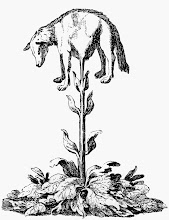“This isn’t going to be about Ellen,” my mother whispered to me as we sat down, referring to her best friend of thirty-years, “This is going to be about God. I just want you to be prepared.”
I was, I guess. Maybe.
I say sometimes that I am culturally Catholic, because that is how both my parents were raised. And for the few in my extended family that are religious, Catholicism is the name of the game. My grandmother was pretty staunch, and had twelve children to prove her point. I have a reasonably strong understanding of the dogma and doctrine of the church, at least as much as can be expected for someone whose parents quit the church wholeheartedly as young adults and never went back. I am characteristically awkward and uncomfortable putting this understanding into any sort of practice, however. My mum, on that note, did know when to kneel and amen and our-father-who-art-in-heaven and so forth, which was somewhat settling. Our two pews did not fully stand out as being confused and unaware of expected pomp and circumstance. Everyone stood when the rest of the attendees stood, and sat accordingly. We cried without cue, but I suspect we were not the only ones.
The acting priest at the St. Andrews Catholic Church is apparently an unpopular one. Ellen didn’t like him much, I know that. He spoke some at the service, and I looked up at the rafters. They were designed to look like the ribs of a ship. The church was built by shipbuilders, which makes sense when you know how St. Andrews itself was built. The priest has an accent, and wore an oft-malfunctioning microphone clipped somewhere on his colourful robes. I understand history better than I understood him.
My aforementioned staunchly Catholic grandmother died in the fall of 2004, my first year of university. Her funeral was hilarious in many ways. The entire family entered the church together from the basement, but the priest started the service before all of us were seated. Our brood is so large, I got stuck in the stairwell with various cousins and aunts, and we had to wait for him to stop talking before making our way to the pews. Later, the priest who knew her very little gave a speech about my grandmother, and the only thing that stands out to me about it was when he said “Molly loved religion, and shared that love of religion with all her children” -- some of whom audibly cracked up. When it came time to perform communion, that same awkward priest announced “Anyone who normally does communion, we invite you to come do so now.” Several of my extended family members stood up, looked confused, and sat back down. Our two pews did not make a move this time, when communion began.
My mother was right in her warning. She had in fact been asked to speak, but declined since she was not being asked to say anything personal, rather to read aloud a verse from a tome she doesn’t believe in. Very little was said about Ellen the person at her funeral, in the whole scope of things. There were lots of readings from the good book, and the songs were all hymns and the like, and an inordinate amount of talk about “god’s banquet” simply because she was a chef. But when the old parish priest spoke, he who actually knew this amazing woman, his words were poignant and suited the affair.
Perhaps I am not surprised in the least that such types of funerals exist not to really celebrate the life of the person just lost or to address the grief being experienced, so much as assure those in attendance that life shall go on in heaven and not to worry. I have been unable to truly write about Ellen, a woman who helped raise me, who I call my second-mother, even here, because the prospect is too painful, the wounds of loss too fresh. I have had to shift focus to my own issues with organized religion for safety. So in that regard, my understanding of the Marxist cliché has broadened. Religion may be the opiate of the masses, but there is, after all, a reason we’re given morphine when in great pain.
Marg Craig













.jpg)




